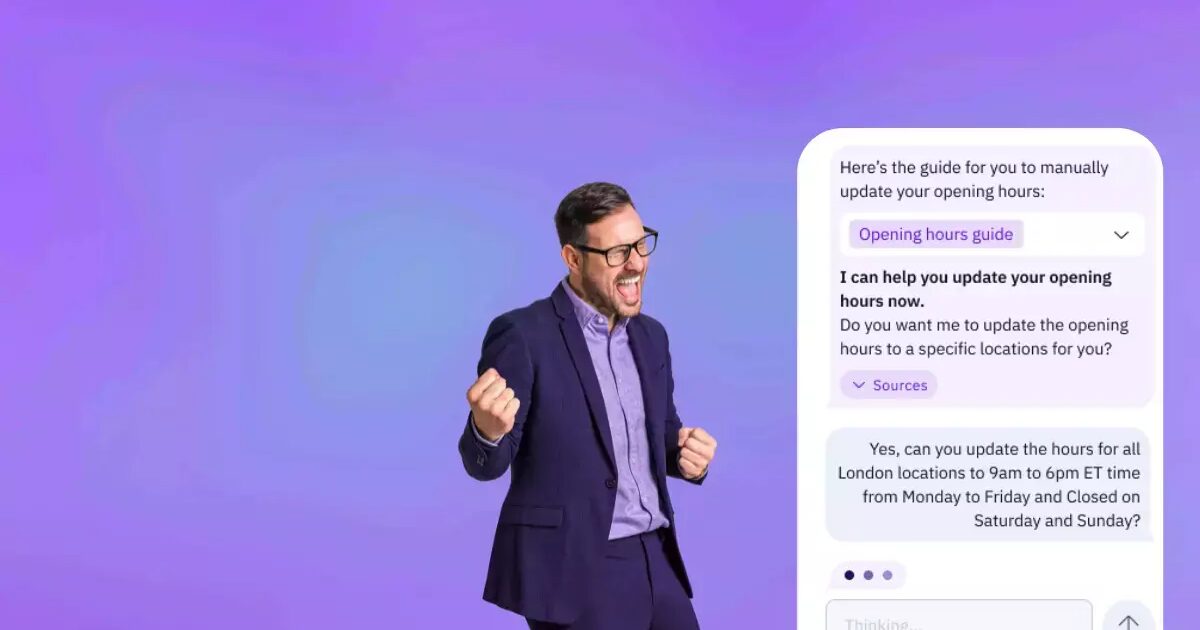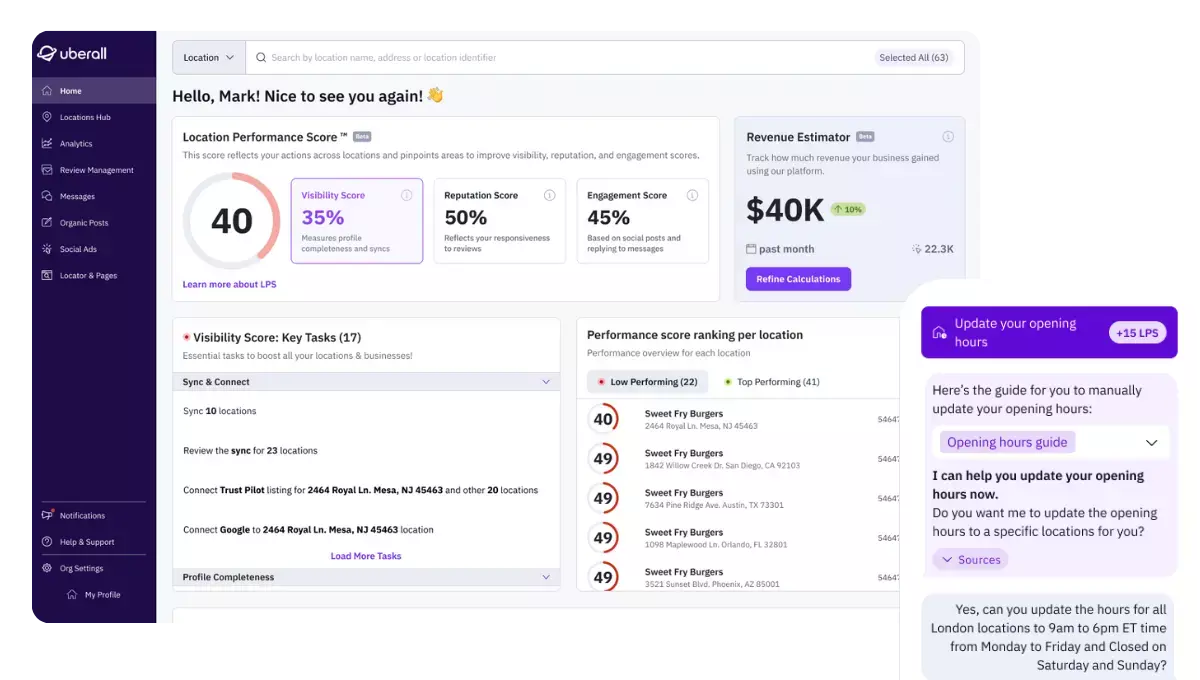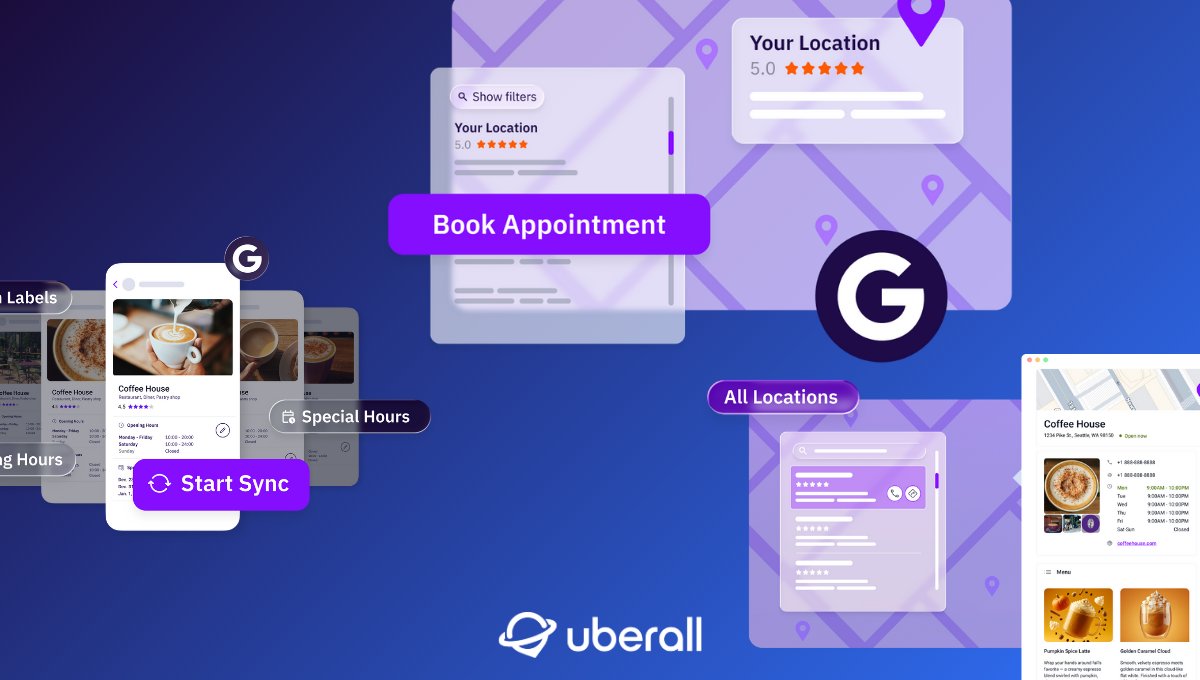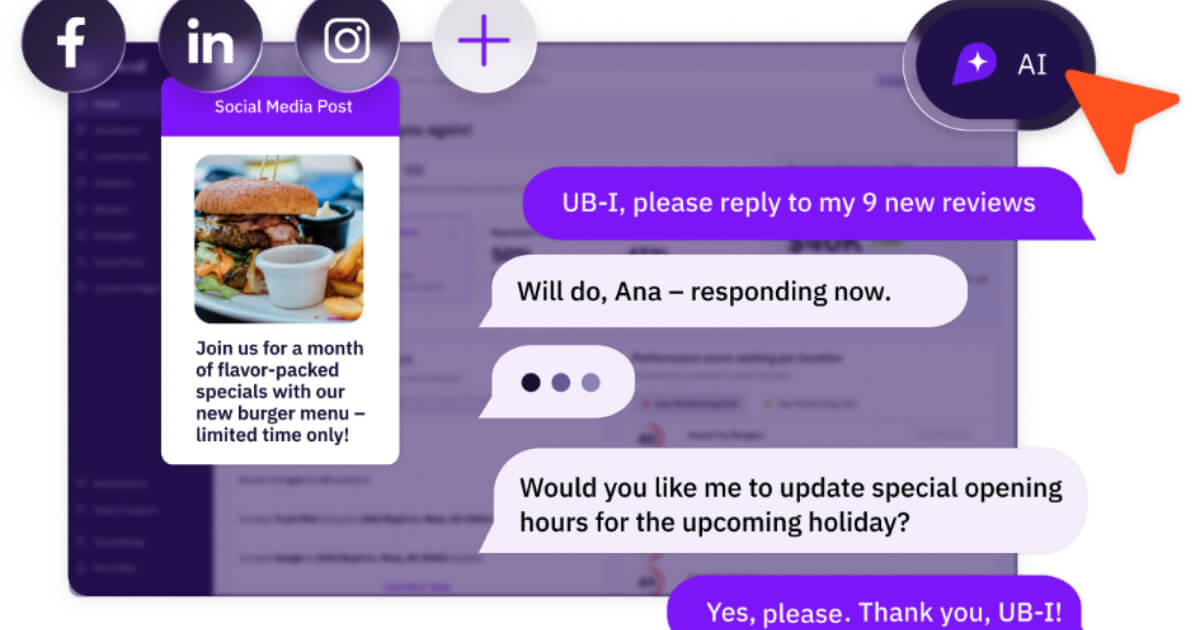
Location Performance Score: The New Way to Measure Your Business Impact
Struggling to measure local marketing impact/find opportunities? The Location Performance Score (LPS) helps you track & optimize revenue impact.
As a multi-location marketer, you rely on a mix of data points to measure location success. You invest in optimizing Google Business Profiles, managing reviews, and running localized ads — but when it comes to proving impact, the data is often fragmented, unclear, or incomplete.
Most businesses track multiple local marketing metrics to evaluate performance. And these five are key to understanding and improving your strategy:
- Local search rankings: How well does your location rank in local results, and how often does it appear for relevant searches?
- Local conversion rate: How many online interactions — like clicks, calls, or direction requests — lead to visits or sales?
- Cost per local lead: What’s the cost of acquiring a potential customer through local marketing?
- Return on ad spend (ROAS): Are your local ads generating enough revenue to justify the investment?
- Local customer lifetime value (LCLV): How much long-term revenue does a customer bring in after engaging locally?
Each of these metrics offers a piece of the puzzle — but they rarely work in sync. A top search ranking doesn’t guarantee more customers, and a strong conversion rate won’t always boost local marketing revenue. Without a unified view, it's hard to connect the dots or make confident decisions.
So, what if the guessing game is no longer a game you can afford to play?
What Have Marketers Been Measuring So Far?
What do we mean when we say location marketers are working with fragmented metrics? They’re bouncing from tab to tab, platform to platform, dashboard to dashboard — trying to make sense of their impact on the business’s bottom line.
According to our survey, almost three in four marketers still struggle to connect location marketing efforts to sales revenue. Most track clicks, reviews, and foot traffic but don’t see a direct link to dollars. They focus on familiar metrics — like the following — in isolation:
1. Google Business Profile Insights
GBP provides data like views, searches, and customer actions — but only within Google’s ecosystem, leaving out third-party directories, social media, and in-store interactions.
2. Customer Surveys and Feedback
Reviews and surveys offer qualitative insights but are often skewed toward extreme (positive or negative) experiences and lack consistency across locations.
3. Footfall Tracking and Attribution
Technologies like Wi-Fi, GPS, or beacons can track store visits influenced by online activity. While insightful, they require extra hardware, customer opt-ins, and can be tough to scale.
4. Revenue Attribution Models
Some brands connect online activity to revenue using discount codes, loyalty programs, or CRM tools. These can be helpful but often miss customers who visit without making an immediate purchase.
To be clear: Each of these approaches offers a valuable perspective — but none provide a complete measurement of your location performance across channels and customer touchpoints. And as a marketer in this climate, you really need to know which of your efforts at which of your locations are driving the most real business outcomes.
Why Are Marketers Turning to Location Performance Score™?
Location Performance Score (LPS) is a unified metric designed to provide a holistic view of how well a business location is performing across online and offline touchpoints. It aggregates multiple data points into a single, actionable score, helping businesses understand what’s working, what’s not, and where to focus their efforts.
What Are the Key Components of LPS?
LPS combines several critical factors to evaluate your location performance:
- Visibility: How easily customers can find your business online.
- Engagement: Clicks, calls, and requests for directions.
- Reputation: Review ratings, volume, and response times.
- Conversions: The relationship between online interactions and offline visits.
What makes LPS even more important is that our new platform AI UB-I will use this score as your northern star for incremental improvements across your locations. In the Uberall platform’s enhanced home page dashboard, customers now see clear updates and progression with their LPS, as well as their revenue estimator, driving them to continue to chip away at the very tasks UB-I recommends when they log in.
And it’s not just a long list of tasks and errors — it’s the three most impactful opportunities for that day, prioritized to move the needle on the bottom line. It might include updating opening hours for the upcoming public holiday, responding to a negative review, or syncing locations.

Why Does LPS Matter for Multi-Location Businesses?
Disclaimer: LPS is a powerful enabler, but it’s not a magic fix. A high score isn’t the goal, but a reflection of the work you put into optimizing your locations; it helps you stay on track by turning complex data across multiple locations into manageable actionable insights.
A low score signals where change is needed, whether that means refining your local SEO, responding to customer reviews more effectively, or enhancing your online and offline customer experience. A rising score, as you might have guessed, confirms that your efforts are paying off.
And if you’re wondering: Why add another metric to measure to our pile of metrics that we’re already measuring? It’s because we see how difficult it is to prioritize as a multi-location marketer — and this needs to change. LPS ensures the following:
1. A Standardized Performance Metric
Instead of relying on inconsistent or siloed data, LPS provides a standardized way to evaluate location performance. This makes it easier to compare locations, identify underperforming stores, and implement targeted improvements.
2. Better Resource Allocation
Businesses can allocate marketing budgets more effectively with LPS. If one location has high visibility but low conversions, it might need better in-store engagement. If another has great conversions but poor reviews, reputation management should be a priority. This is where the Score helps businesses optimize across the three pillars of visibility, reputation, and engagement.
As our VP of Product Partho explains: “LPS allows you to compare performance between different locations to learn from top-performing ones and prioritize improving the low-performing ones.”
3. Actionable Insights at Scale
LPS doesn’t just highlight problems — it surfaces opportunities with clear, data-driven recommendations. Whether it’s adding CTA buttons to Locator Pages or optimizing Google Business Profiles, businesses will in future get clear next steps to improve performance.
4. Bridging the Online-Offline Gap
Many businesses struggle to connect digital marketing efforts with in-store success. LPS helps bridge this gap by showing how online engagement translates into real-world visits and revenue, making it easier to prove the ROI of local marketing.
Location marketing is changing quickly, but demand to show the money isn’t going anywhere. What’s important is to bring clarity and simplicity to this complex space to help marketers measure what truly matters — local marketing revenue.
A Score That Finally Helps Marketer Prioritize
As marketing complexity increases, so does the pressure to prove ROI — not just with impressions and clicks, but with real revenue impact.
Location Performance Score isn’t just another metric to watch. It’s a smarter way to prioritize your efforts, compare performance across locations, and focus on what really drives this impact. It helps you spend less time guessing and more time doing what moves the needle — whether that’s fixing a broken listing, responding to a critical review, or optimizing your top-converting locations.
In a world where marketers are expected to do more with less, LPS gives you the clarity, focus, and momentum to do just that — and prove the value of every decision you make, one location at a time.
Ready to Transform Your Business?
Connect with our partnership team to learn how Uberall can help you achieve similar results. Get a personalized consultation and discover the opportunities waiting for your business.
Resources











